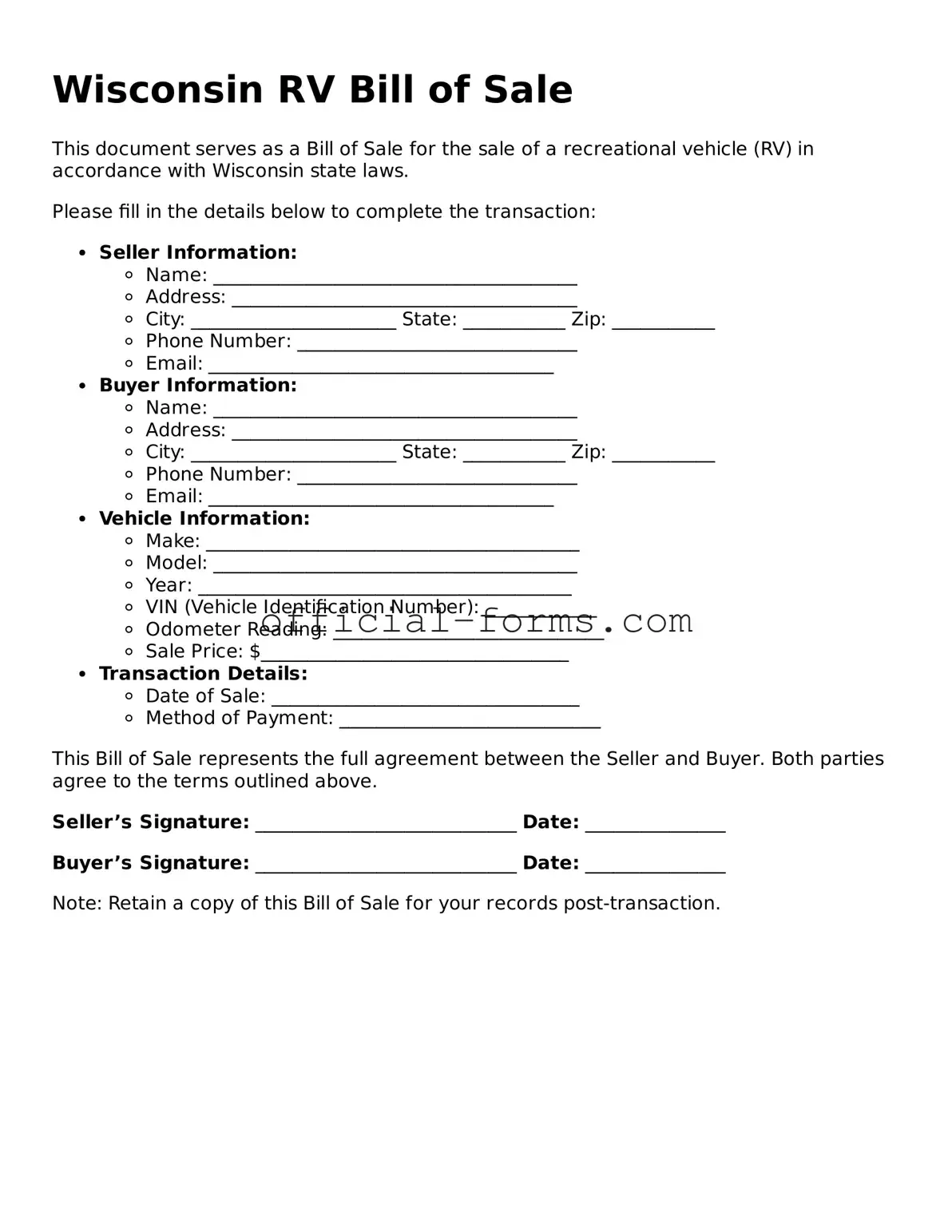Official Wisconsin RV Bill of Sale Document
The Wisconsin RV Bill of Sale form is a legal document that records the sale and transfer of ownership of a recreational vehicle in Wisconsin. This form serves as proof of the transaction between the buyer and seller, detailing essential information about the RV and the parties involved. Understanding this form is crucial for ensuring a smooth transfer and protecting the rights of both parties.
Open My RV Bill of Sale Now
